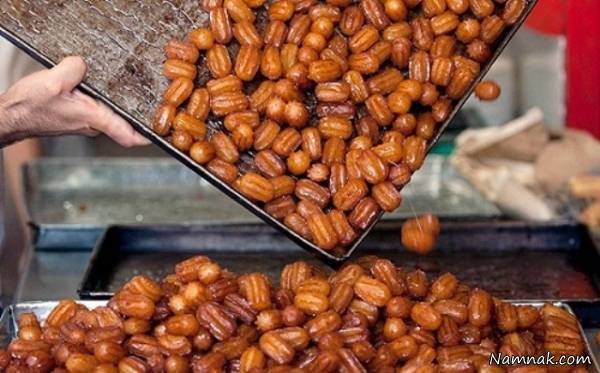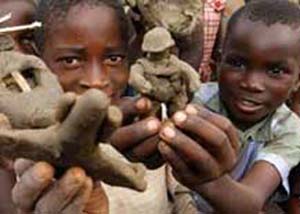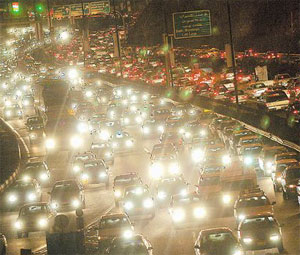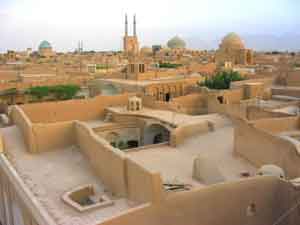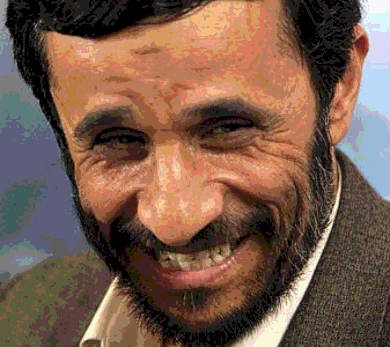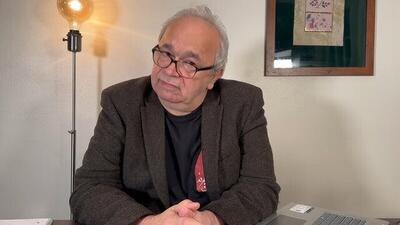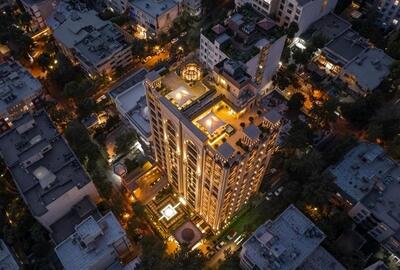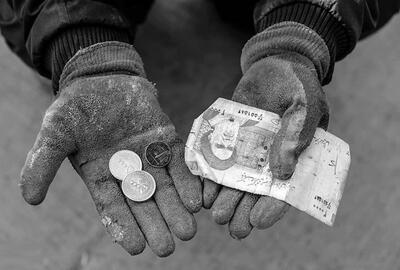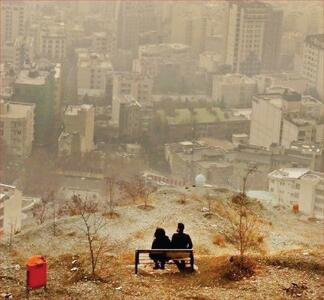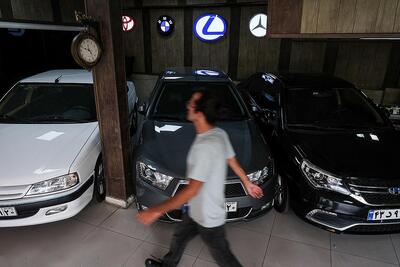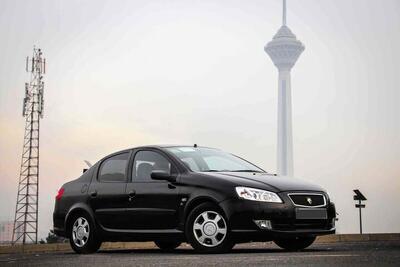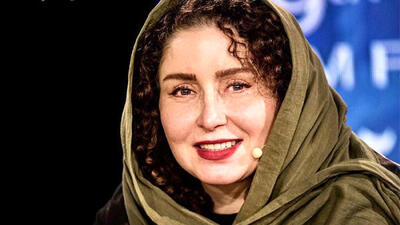پنجشنبه, ۲۷ دی, ۱۴۰۳ / 16 January, 2025
پهنه های کلانشهری 25: ریو دِژانیرو
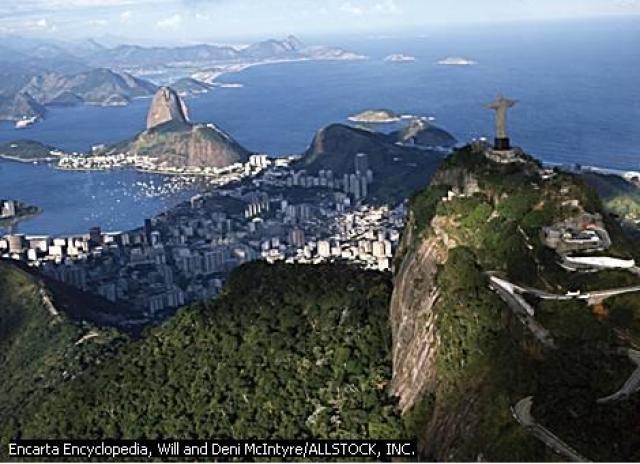
مقدمه:
ریو دژانیرو (Rio de Janeiro) دومین شهر بزرگ برزیل است که اغلب سیداد ماراویلوسا (Cidade Maravilhosa)، شهر اعجاب انگیز، نیز خوانده می شود. ریو با استقرار بین اقیانوس اطلس و تپه های سبز برزیل از منظره ی طبیعی مهیجی برخوردار است که برای دهه ها بازدیدکنندگان را تحت تأثیر خود قرار داده. انرژی اهالی این شهر افسانه ای است، هیچکس قادر نیست بهتر از اهالی ریو (کاریوکاها) ((cariocas برقصد یا میهمانی هایی طولانی تر از آنان برگزار کند. کاریوکاها حتی در خود برزیل هم به عنوان مردمانی باصفا، خوش گذران و آسانگیر شناخته می شوند. تفرجگاههای اصلی اهالی شهر سواحل کپاکابانا (Copacabana) و ایپانما (Ipanema) هستند، نامهایی که به سادگی ادا می شوند Easilly roll off the tongue. ریو شهر بزرگی است که هنوز هم بی تفاوتی بیش از حد و اغلب بیرحمانه ای نسبت به قشر فقیر دارد. در کنار هتلهای پنج ستاره فقیرترین کاریوکاها در خانه های مقوایی زندگی می کنند. گستره ی وسیع فاولا ها (favelas) یا حلبی آبادها تا بالای تپه ها نیز رسیده است، جائیکه بسیاری از ساکنین ریو در فقر، مصرف مواد مخدر و جرم و جنایت به سر می برند. در اوایل سالهای 1990 و با گزارش رسانه ها مبنی براینکه مأموران فاسد پلیس کودکان بی خانمان را به قتل می رساندند، رضایت و خشنودی کاریوکاها به سراسیمگی بدل شد. شهر جلوه ی خود را همچون بسیاری از توریستهایش از دست داد. در یکی از معروفترین وقایع، باند جوانان ولگرد توریستها و کاریوکاها را از فاولاهای پایین آمده تا سواحل کاپاکابانا می ربودند. شهر اعجاب انگیز؟ شاید فقط به لحاظ جغرافیایی اینگونه باشد. در حال حاضر نیز کاریوکاها خشنود از مشکلاتشان به نظر نمی رسند. شهر به آهستگی در تلاش است تا خیابانهای خود را از جنایتکاران و سالها فساد باز پس گیرد. در حال حاضر بسیاری از حلبی آبادها دارای سرویسهای اولیه ی شهری هستند. مسائل اجتماعی دلهره آور هستند اما کاریوکاها از خوش بینی غیر قابل وصفی بر خوردارند.
حوزه های همسایگی:
جغرافیا و طبقه معرف حوزه های همسایگی در ریو هستند. ثروتمندان نزدیک به آب زندگی می کنند و توده ی عظیمی از مردمان فقیر در مناطق بالای تپه استقرار یافته اند. در این بخش فقیران فاولاها یا حلبی آبادهایی را ساخته اند که فاقد نیازمندیهای اولیه ای همچون آب، برق و جاده های آسفالتی هستند. کاریوکاها همچنین به صورت دوره ای فضای زندگیشان را بازتعریف می کنند بدین ترتیب با رشد شهر بر فراز زمین سخت آنها نیز تپه ها را مسطح کرده و یا کانالهایی از میان آنها حفر می کنند. اهالی شهر همچنین بخشهایی از خلیج گانابارا (Guanabara) را به جهت ایجاد فضا برای شهر در حال رشد، احیا کرده اند.
در حال حاضر ریو به سه منطقه ی مجزا تقسیم شده است. مرکز تاریخی سنتی بین بستر شرقی سرا د کاریوکا (Serra de Carioca) و خلیج گانابارا قرار گرفته است. سرا دامنه ی کوهستانی کوچک ساحلی است که از شرق به غرب امتداد یافته و شهر را به دو بخش تقسیم کرده است. در شمال و غرب مرکز تاریخی منطقه ی شمالی قرار دارد، ناحیه ی شهری وسیعی که بیشتر شامل خانه های کم درآمد نشین و مراکز تولیدی است. منطقه ی جنوبی با محله های شیک کپاکابانا، ایپانما، لبلن (Leblon) و گاویا (Gávea)، قشر متوسط و کاریوکاهای ثروتمند را در خود جای داده است. با متراکم تر شدن فاولاها در سراشیبی های پایین تپه ثروتمندان نیز حوزه های همسایگی منطقه ی جنوبی را ترک می کنند. در دهه های پایانی قرن بیستم کپاکابانا، لبلن و ایپانما کاهش جمعیتی ناچیزی را تجربه کردند. بسیاری از ساکنین ثروتمندتر به بارا دتیجوکا (Barra de Tijuca)، آنسوتر از غرب در امتداد ساحل، نقل مکان کرده اند. بارا دتیجوکا یکی از شیک ترین محله های شهر محسوب می شود.
بسیاری از فاولاها به حوزه های همسایگی مشخص با امکانات شهری پایه ای بدل شده اند. از سال 1991 تا 1996 تعداد خانوارهای شهری از 1.6 میلیون به 1.7 میلیون افزایش یافت و میزان تملک نیز از 3.4 نفر در هر خانوار به 3.3 تن رسید.
جمعیت:
در سال 2007 حوزه ی شهری ریو municipality of Rio ، شهر بزرگ city proper، جمعیتی برابر با 6،093،472 نفر داشت. هرچند در سال 2003 ناحیه ی وسیع کلانشهر جمعیتی 11.2 میلیون نفری را در خود جای داده بود. اگرچه رشد جمعیت طی بیشترین سالهای قرن بیستم سریع بوده است، ولی این میزان بین سالهای 1980 و 1990 به گونه ی قابل ملاحظه ای کاهش یافت؛ طی این دوران منطقه ی کلانشهری کمترین میزان رشد سالانه ی جمعیتی و فقط 0.7 درصد را اعلان کرد. این میزان رشد جمعیت با سود سالانه ی فقط 0.4 درصدی در منطقه ی شهری ریو ناهمخوانی پیدا کرده است، این در حالی است که حومه های شهری دور از مرکز سود سالانه ی متوسط در حدود 1.5 درصدی داشته اند.
ساختار قومیتی ریو بازتابی از تاریخ آن است و مردمانی با خاستگاه آفریقایی، اروپایی و بومیان آمریکایی را شامل می شود. نزدیک به دو سوم از جمعیت شهر آفریقایی تبار هستند، اگرچه این گروه ترکیب نژادی گسترده و ازدواجهای درون گروهی را منعکس می کنند که به جامعه ی برزیل ویژگی بخشیده است. با وجود اعلان اینکه تحمل و پذیرش نژادی از شاخصه های جامعه ی برزیل است ولی سفید پوستان نوعا از موقعیتهای اقتصادی و اجتماعی ممتازتری نسبت به اهالی آفریقایی یا بومی تبار برخوردارند.
محیط:
خلیج گانابارا تا حد بالایی آلوده است. در تمامی طول سال بسیاری از سواحل ریو از جمله سواحل شناخته شده ی بین المللی ایپانما و کپاکابانا به دلیل وجود سطح بالایی از ته نشینهای باکتریایی کلیفورم برای شناگران ممنوع هستند. سیستم بهداشتی ناکارآمد در حلبی آبادها سبب تکثیر بسیاری از بیماریها شده است.
فرهنگ و آموزش:
اگرچه ریو نه بزرگترین شهر برزیل است و نه پایتخت آن ولی نقش تاریخی این شهر به عنوان مرکز شهری پیشرو در کشور، ریو را به مهمترین شهر به لحاظ آموزشی، فرهنگی و هنری بدل کرده است. شهر دارای هم دانشگاههای همگانی و هم خصوصی است. دانشگاههای همگانی شامل دانشگاه فدرال ریو دژانیرو (1920) دانشگاه دولتی ریو دژانیرو (1961) و دانشگاه ریو دژانیرو هستند. دانشگاه مختلط University Conglomerate کاندیدو مندس (Cándido Mendes) (1981)، دانشگاه گاما فیلو (Gama Filho) (1972)، دانشگاه کاتولیک وابسته به پاپ ریو دژانیرو (1941) و دانشگاه سانتا ارسلا (Santa Úrsula) (1938) همگی خصوصی هستند.
ریو شامل بایگانی ملی و همچنین کتابخانه ی ملی است که در یک بنای نوکلاسیک با ابهت جای دارد. از دیگر بخشهای فرهنگی مهم شهر موزه های آن هستند که شامل موزه ی ملی، موزه ی هنرهای مدرن، موزه ی هنرهای عالی ملی، موزه ی تاریخی ملی، موزه ی سرخپوستان بومی آمریکا و موزه ی کارمن میراندا (Carmen Miranda) هستند. تئاتر شهر که در سال 1905 و با الگوبرداری از خانه ی اپرای پاریس ساخته شده در مرکز شهر قرار دارد و جایگاه گروههای باله ی ریو و شرکتهای اپرایی است.
معماری مؤلفه ی مهمی در چشم انداز شهری است. از جمله بناهای معماری دینی شهر شامل صومعه ی سن آنتونیو که در سال 1608 ساخته شده و گمان می رود قدیمی ترین بنای مذهبی در شهر باشد؛ دیر سنت بنتو (St. Bento) با کلیسای کوچک سبک باروکی اش؛ کلیسای مریم مقدس کارمو (Carmo)، محلی که در آن هر دو پادشاه برزیلی تاج گذاری کردند و کلیسای مریم مقدس کاندلاریا (Candelária) که برخی بر این عقیده اند زیباترین کلیسای شهر است، هستند.
از دیگر بناهای شاخص شهر کاخ امپراطوری است که در غرب فرودگاه سانتوز دیومونت (Santos Dumont) واقع شده است. این کاخ ابتدا در سال 1743 و به عنوان پایتخت حاکم مستعمراتی برزیل ساخته شد و طی دورانی که شهر پایتخت امپراطوری بود به کاخ سلطنتی بدل شد. این کاخ اخیرا مرمت شده و حالا مرکزی فرهنگی محسوب می شود. کاخ با شکوه قرن نوزدهمی دیگر ایتاماراتی (Itamaraty) و کتت ((Catete هستند که هر دو در مرکز شهر واقع شده اند. کاخ کتت بین سالهای 1896 و 1945 در اشغال رؤسای جمهور کشور بود و حالا خانه ی موزه ی جمهوری است. جلسات مجلس مقننه در کاخ تیرادنتس (Palácio Tiradentes) برگزار می شود، محلی که پیش از این و در دوران پایتختی ریو جایگاه مجلس فدرال بود. شاکله ی معماری شهر در قرون 17، 18 و 19 تقابل چشمگیری با ساختمان فرامدرن پتروبراس (Petrobras)، شعبه ی اصلی شرکت نفت کشور و کلیسای جامع پیشروی کلانشهر، دارد. از جمله مشهورترین نقاط شاخص شهر، پائو د آکیوکار (Pão de Açúcar) که در شبه جزیره ی پیشرفته در خلیج گانابارا واقع شده و در انگلیس با عنوان کوه کله قندی شناخته می شود و مجسمه ی بزرگ مسیح رهایی بخش هستند که با استقرار بر فراز کوه کرکوادو (Corcovado) در دامنه ی کوهستانی ساحلی کاریوکا بر شهر اشراف یافته است.
هنرهای نمایشی:
ریو مرکز مهمی برای هنرهاست. شهر خانه ی گروه تئاتر باله ی کلاسیک شهر، شرکت باله و ارکستر سمفوفی برزیل است. مدرسه ی به لحاظ ملی مشهور موسیقی بخشی از دانشگاه فدرال ریو دژانیرو محسوب می شود. سالن تئاتر شهر میزبان باله و اپرا است. گروههای تئاتر زیادی در شهر و در بسیاری از مراکز فرهنگی حضور دارند. ریو میزبان بسیاری از رویدادهای موسیقایی همچون جاز، رقص و جشنواره های سینمایی است. ریو دارای بیش از 60 گالری هنر، 75 کتابفروشی و کتابخانه و شمار زیادی سینما، باشگاه و سالن رقص است.
مسائل معاصر:
اگرچه ممکن است ریو زیباترین شهر برزیل باشد ولی در عین حال یکی از پر مخاطره ترین شهرهای این کشور است. حلبی آبادهایی که سراشیبی اطراف تپه ها را فرا گرفته اند تقریبا 20 درصد اهالی شهر را در خود جای داده اند و اغلب خطرناک، غیر بهداشتی و فاقد امکانات اولیه همچون آب، سیستم فاضلاب و تا حد کمتری برق هستند. شمار زیادی از فقیران شهری فاقد شغل و امکان دسترسی به مدرسه هستند و حتی دسترسی محدودی به مراقبتهای بهداشتی دارند. با این وجود نرخ باسوادی در ریو بالا و نزدیک به 90 درصد است و مجموعه ی به هم پیوسته ای از بیمارستانها و کلینیکهای عمومی لااقل برخی از مراقبتهای بهداشتی را برای فقیرترین شهروندان فراهم می آورند. فساد در دستگاه پلیس گسترش یافته و آلودگی محیطی در ناحیه ی کلانشهری مسئله ای سراسری است. آبهای خلیج گانابارا بسیار آلوده تر از آن هستند که بتوان آبتنی و شستشوی ایمنی در آنها داشت.
ریو مشکلات جنایی عدیده ای را در اوایل سالهای 1990 تجربه کرد، زمانیکه دسته های تبهکاری قدرتمند بر تمامی حوزه های همسایگی در فاولا تسلط داشتند. در سال 1993 قتل کودکان بی خانمان توسط نیروهای فاسد پلیس که به خاطر منافع تجاری دست به این اقدام می زدند توجهات بین المللی را به مسائل اجتماعی و بزهکارانه ی ریو جلب کرد. در سال 1994 ریو با میزان قتل 61 نفر از هر 100،000 تن یکی از خشونت بارترین شهرهای دنیا به شمار می آمد. این میزان چیزی بیش از دو برابر نرخ قتل در سائوپائولو یعنی 28 نفر در بین 100،000 نفر بود.
منابع:
Bevan Gall, Susan; Copolla, Jill. Junior Worldmark Encyclopedia of World Cities, U.X.L staff, 2000.
Kent, Robert B. "Rio de Janeiro (city)." Microsoft ® Encarta ® 2009.
Email: malihedargahi@yahoo.com
پهنه های کلانشهری (1): تعریف http://www.anthropology.ir/node/11263
(2) توکیو http://www.anthropology.ir/node/11348
(3) مکزیکو سیتی http://www.anthropology.ir/node/11428
(4) سئول http://www.anthropology.ir/node/11504
(5) نیویورک http://www.anthropology.ir/node/11645
(6) جاکارتا http://www.anthropology.ir/node/11758
(7) بمبمئی http://www.anthropology.ir/node/11868
(8) دهلی http://www.anthropology.ir/node/11943
(9) کیوتو http://www.anthropology.ir/node/12042
(10) سائوپائولو http://www.anthropology.ir/node/12169
(11) مانیل http://www.anthropology.ir/node/12242
(12) هنگ کنگ http://www.anthropology.ir/node/12383
(13) شانگهای http://www.anthropology.ir/node/12446
(14) لس آنجلس http://www.anthropology.ir/node/12594
(15) لندن http://www.anthropology.ir/node/12680
(16) قاهره http://www.anthropology.ir/node/12849
(17) بوینس آیرس http://www.anthropology.ir/node/13034
(18) پاریس http://www.anthropology.ir/node/13109
(19)شیکاگو http://www.anthropology.ir/node/13202
(20) مادرید http://www.anthropology.ir/node/13367
(21) سیدنی
(22) برلین http://www.anthropology.ir/node/13516
گذری بر قصه ها و افسانه های ملل: افسانه ای از برزیل
http://www.anthropology.ir/node/11410
Introduction
Rio de Janeiro, the second largest
city in Brazil, is often called Cidade
Maravilhosa, the Marvelous City.
Squeezed by the Atlantic Ocean and the
verdant hills of Brazil, Rio’s dramatic
natural setting has impressed visitors
for decades. The energy of its residents
is legendary. No one dances more
exquisitely or parties longer than the
cariocas (residents of Rio). Even within
Brazil, cariocas are known as fun, sensual,
and easygoing. Their main playgrounds
are the beaches of Copacabana
and Ipanema, names that easily roll off
the tongue. Yet, Rio is a great city of
extremes, often cruel in its indifference
to the poor. Next to five-star hotels, the
poorest cariocas live in cardboard
houses. The great favelas, shantytowns,
reach high into the hills, where many
residents are lost to poverty, drug abuse,
and a life of crime. In the early 1990s,
cariocas were shaken from their complacency
to social problems when the
media reported that corrupt police
officers were murdering homeless children. The
city lost its luster, as well as many of its
tourists. In one of the most famous
incidents, roaming bands of youths
from the favelas descended on Copacabana
Beach, robbing tourists and cariocas
alike. Cidade Maravilhosa (marvelous
city)? Perhaps only in geography. Yet,
cariocas no longer appear complacent
about their problems. The city is slowly
trying to regain its streets from criminals
and years of decay. Many favelas
now have basic city services. Its social
problems are daunting, but cariocas
have an uncharacteristic optimism.
Neighborhoods
Geography and class define Rio's
neighborhoods. The rich live close to
the water. The great masses of poor people
have been pushed high into the
hills. There, the poor have built favelas,
shantytowns that lack basic necessities
like water, electricity, and paved roads.
Cariocas have also redefined their space
periodically. As the city grew over difficult
terrain, they leveled hills or bored
tunnels through them. They reclaimed
parts of Guanabara Bay to make room
for the growing city.
Today, Rio is divided into three distinct
zones. The traditional historical
center is sandwiched by the eastern
base of the Serra de Carioca and Guanabara
Bay. The Serra is a small coastal
mountain range that runs east-west and
cuts the city in half. West and north of
the historic center is the northern zone,
a large urban area of mostly lowincome
housing, and factories. The
southern zone, with the fashionable
Copacabana, Ipanema, Leblon, and
Gávea neighborhoods, is home to middle-
class and wealthy cariocas. As the
favelas inched closer down the slopes,
many wealthy people abandoned the
southern-zone neighborhoods. Copacabana,
Leblon, and Ipanema experienced
slight population decreases in the last
decade of the twentieth century. Many
wealthier residents have moved to Barra
da Tijuca, further west along the coast.
It is considered one of the city's most
fashionable neighborhoods.
Many of the favelas have become
established neighborhoods with basic
city services. From 1991 to 1996, the
number of households in the city
increased from 1.6 million to 1.7 mil-
lion. The occupancy rate went down,
from 3.4 people per household to 3.3.
Population:
The municipality of Rio, the city proper, had a population of 6,093,472 in 2007. The vast metropolitan region, however, was home to a population of 11.2 million (2003). Although population growth had been rapid during most of the 20th century, it slowed significantly between 1980 and 1990; during this period, the metropolitan region posted the lowest annual population growth rate, only 0.7 percent. That growth has been uneven, with the municipality of Rio posting only a 0.4 percent annual gain, while outlying suburban municipalities have averaged about 1.5 percent annually.
Rio’s ethnic makeup mirrors its history, which has included people of African, European, and Native American origin. Nearly two-thirds of the population is of African descent, although this group reflects the widespread racial mixing and intermarriage that have characterized Brazilian society. While racial tolerance and acceptance are often heralded as characteristics of Brazilian society, whites typically enjoy more privileged social and economic positions than people of African or native descent.
Environment:
Guanabara Bay is highly polluted.
Throughout the year, many of Rio's
beaches, including the internationally
known beaches of Ipanema and Copacabana,
are off limits to swimmers
because of high levels of fecal coliform
bacteria. Poor sanitation in the favelas
lead to the proliferation of many diseases.
IV. EDUCATION AND CULTURE
Although Rio is not Brazil’s largest city, nor its capital, its historical role as the nation’s preeminent urban center makes it the single most important city in the country in terms of education, culture, and the arts. The city is well endowed with both public and private universities. Public universities include the Federal University of Rio de Janeiro (1920), the State University of Rio de Janeiro (1961), and the University of Rio de Janeiro (1969). Cándido Mendes University Conglomerate (1981), Gama Filho University (1972), Pontifical Catholic University of Rio de Janeiro (1941), and University Santa Úrsula (1938) are all private universities.
Rio contains the National Library, housed in an impressive neoclassical building, and the National Archive. Another important part of the city’s cultural offerings are its museums, including the National Museum, the Museum of Modern Art, the National Fine Arts Museum, the National Historical Museum, the Museum of the Indian, and the Carmen Miranda Museum. The Municipal Theater, built in 1905 and modeled on the Paris Opera House, is in the core of the city and is home to Rio’s ballet troupe and opera company.
Architecture is an important component in the city’s landscape. Religious architecture includes the Convent of San Antonio, which was built in 1608 and is thought to be the oldest religious structure in the city; the Monastery of St. Bento with an impressive Baroque-style chapel; Our Lady of Carmo Church where both Brazil’s emperors were coronated; and Our Lady of Candelária Church, thought by some to be the city’s most beautiful church.
Another building of interest is the Imperial Palace, located several blocks west of Santos Dumont Airport. Originally constructed as Brazil’s colonial governor’s capitol in 1743, it was converted to the royal palace during the city’s period as an imperial capital. It has recently been restored and now houses a cultural center. Other impressive 19th-century palaces include Itamaraty and Catete, both located in the city center. The latter was occupied by the country’s presidents between 1896 and 1954 and now houses the Museum of the Republic. The state legislature meets in the Palácio Tiradentes, formerly the home of the federal assembly when Rio was the nation’s capital. The city’s architecture from the 17th, 18th, and 19th centuries stands in dramatic contrast with its ultramodern Petrobras building, headquarters of the state petroleum company, and the avant-garde Metropolitan Cathedral. The city’s most famous landmarks are Pão de Açúcar (404 m/1,325 ft), which is situated on a peninsula jutting into Guanabara Bay and is known as Sugar Loaf Mountain in English, and the massive (40 m/131 ft) Christ the Redeemer statue, which overlooks the city from the top of Corcovado Mountain (704 m/2,310 ft) in the Serra da Carioca coastal range.
Performing Arts
Rio is an important center for the
arts. The city is home to the Companhia
de Balé Clássico do Teatro Municipal, the
ballet company, and the Orquestra Sinfônica
Brasileira, the symphony orchestra.
The nationally renowned School of
Music is part of the Federal University
of Rio de Janeiro. The Municipal Theater
hosts ballet and operas. There are
many theater groups in the city and
dozens of cultural centers. Rio hosts
many musical events, including jazz,
dance, and cinema festivals. Rio has
more than 60 art galleries, 75 bookstores
and libraries, and dozens of cinemas,
clubs and dance halls.
Contemporary issues:
Although Rio may be Brazil’s most beautiful city, it is also one of its most troubled. The favelas which blanket the slopes of surrounding hillsides house approximately 20 percent of the city’s residents and are often dangerous, unsanitary, and lacking in basic services such as water, sewerage, and, to a lesser extent, electricity. Many of the city’s poor have no jobs, no access to schools, and only limited access to medical care. However, literacy rates for Rio are high, nearly 90 percent, and a system of public hospitals and clinics provides at least some medical care to the city’s poorest residents. Police corruption is widespread. Environmental pollution is a problem throughout the metropolitan region, and the waters of Guanabara Bay are considered too polluted for safe bathing.
Rio experienced serious crime problems in the early 1990s, when powerful criminal gangs took over entire favela neighborhoods. The murders of homeless children in 1993 by corrupt police officers acting on behalf of commercial interests drew international attention to Rio’s social and criminal problems. With a murder rate of 61 per 100,000 people in 1994, Rio was one of the world’s most violent cities. This was more than twice the rate of 28 per 100,000 for São Paulo.
ایران مسعود پزشکیان دولت چهاردهم پزشکیان مجلس شورای اسلامی محمدرضا عارف دولت مجلس کابینه دولت چهاردهم اسماعیل هنیه کابینه پزشکیان محمدجواد ظریف
پیاده روی اربعین تهران عراق پلیس تصادف هواشناسی شهرداری تهران سرقت بازنشستگان قتل آموزش و پرورش دستگیری
ایران خودرو خودرو وام قیمت طلا قیمت دلار قیمت خودرو بانک مرکزی برق بازار خودرو بورس بازار سرمایه قیمت سکه
میراث فرهنگی میدان آزادی سینما رهبر انقلاب بیتا فرهی وزارت فرهنگ و ارشاد اسلامی سینمای ایران تلویزیون کتاب تئاتر موسیقی
وزارت علوم تحقیقات و فناوری آزمون
رژیم صهیونیستی غزه روسیه حماس آمریکا فلسطین جنگ غزه اوکراین حزب الله لبنان دونالد ترامپ طوفان الاقصی ترکیه
پرسپولیس فوتبال ذوب آهن لیگ برتر استقلال لیگ برتر ایران المپیک المپیک 2024 پاریس رئال مادرید لیگ برتر فوتبال ایران مهدی تاج باشگاه پرسپولیس
هوش مصنوعی فناوری سامسونگ ایلان ماسک گوگل تلگرام گوشی ستار هاشمی مریخ روزنامه
فشار خون آلزایمر رژیم غذایی مغز دیابت چاقی افسردگی سلامت پوست




